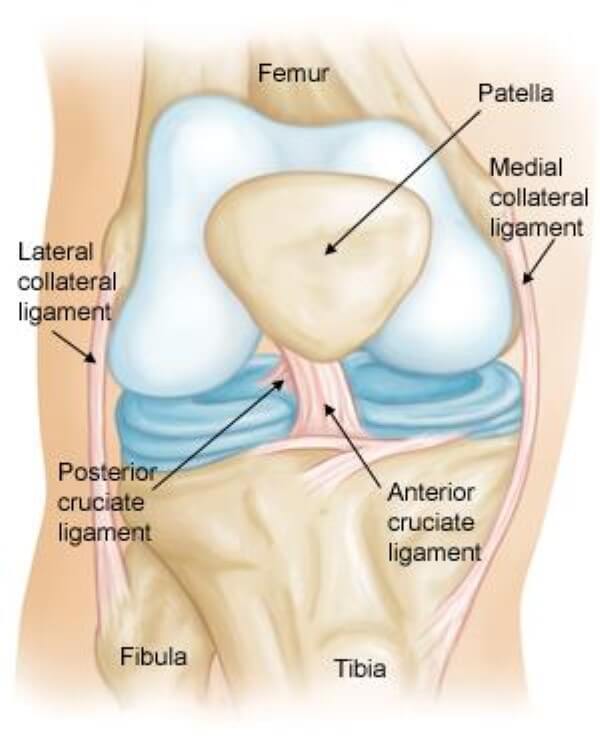Our knees bear the brunt of our daily activities, supporting our bodies and enabling us to move with grace and agility. However, as the years roll by, the wear and tear on this vital joint can take its toll, leading to one of the most common forms of joint pain – knee osteoarthritis. Characterized by the gradual deterioration of cartilage and the development of bone spurs within the knee joint, this condition affects millions of individuals worldwide. If left unchecked, it can significantly impact one’s quality of life, causing chronic pain, stiffness, and limitations in mobility.

In this comprehensive article, we delve deep into the intricate world of knee osteoarthritis, shedding light on the ten key symptoms that herald its onset and progression. Whether you’re already grappling with the discomfort of knee osteoarthritis or are keen to arm yourself with knowledge for the future, this guide is your compass to understanding the condition and exploring the myriad ways to treat it effectively.
Check out our Knee Pads for Comfort and Relief
Knee osteoarthritis is not an affliction limited to the elderly, as it can manifest in people of all ages, making it all the more essential to be well-informed. In the pages that follow, we will explore the myriad ways this condition can manifest, from the subtle twinges and creaks to the debilitating pain that can disrupt your daily life. We’ll also unravel the latest advancements in treatment strategies, offering a ray of hope to those grappling with this pervasive joint ailment.
From lifestyle adjustments and physical therapy to cutting-edge medical interventions, our aim is to equip you with the knowledge and tools necessary to regain control over your knee health. Join us on this journey of discovery as we uncover the nuances of knee osteoarthritis and empower you with the information needed to take charge of your well-being.
The Symphony of Symptoms: Ten Clues of Knee Osteoarthritis
Before we embark on the quest to explore the treatment options, it is crucial to understand the ten key symptoms that often accompany knee osteoarthritis. Recognizing these signs can lead to early intervention and a better chance at managing the condition effectively.
- Joint Pain: The most common and often the earliest symptom of knee osteoarthritis is pain. Initially, it might only occur during or after physical activity, but as the condition progresses, it can become constant and more severe.
- Stiffness: Knee stiffness is another hallmark of this condition. You may find it difficult to bend your knee fully, especially in the morning or after prolonged periods of inactivity.
- Swelling: Osteoarthritis can lead to inflammation and swelling of the knee joint. This can be due to the body’s response to the wear and tear occurring in the joint.
- Crepitus: If you’ve ever heard a grinding or crunching sound when you move your knee, you might be experiencing crepitus. This noise is caused by the rough surfaces of the joint rubbing together.
- Limited Range of Motion: As the cartilage deteriorates and the joint becomes less flexible, you may notice a reduction in your knee’s range of motion. It becomes harder to fully extend or bend your knee.
- Weakness: Muscle weakness around the knee joint is a common symptom of osteoarthritis. This can be a result of reduced physical activity due to pain and stiffness.
- Instability: The knee may feel unstable or wobbly, making it challenging to support your body weight. This instability can increase the risk of falls and injuries.
- Bony Enlargements: As the condition progresses, your body may respond by forming bony growths called bone spurs or osteophytes. These protrusions can be felt as hard lumps around the joint.
- Pain During Weather Changes: Some individuals with knee osteoarthritis report increased pain and discomfort when the weather changes, particularly in response to cold and damp conditions.
- Difficulty with Activities: You might find it challenging to perform routine activities like walking, climbing stairs, or getting in and out of chairs due to the pain and limitations in your knee’s function.
Understanding these symptoms is the first step towards seeking appropriate treatment. Remember, the experience of knee osteoarthritis can vary greatly from person to person, and not everyone will experience all of these symptoms. Early diagnosis and management are crucial to prevent the condition from worsening.
Navigating the Path to Relief
The good news is that knee osteoarthritis is manageable, and numerous treatment options are available to help alleviate pain and improve your quality of life. In the subsequent sections of this article, we will explore various strategies, from lifestyle modifications and physical therapy to medications and surgical interventions. Our goal is to provide you with a comprehensive toolkit for addressing knee osteoarthritis, tailored to your unique needs and preferences.
So, whether you’re seeking to alleviate your own knee pain or you’re supporting a loved one in their journey towards better joint health, this article will be your compass, guiding you through the complex landscape of knee osteoarthritis treatment. We’ll help you make informed decisions and embark on a path towards a more comfortable, active, and fulfilling life.
Lifestyle Modifications: Your First Line of Defense
The foundation of managing knee osteoarthritis often begins with simple yet effective lifestyle changes. These modifications can significantly reduce pain and improve your overall joint health. Here are some key adjustments to consider:
- Weight Management: Excess body weight places added stress on your knees. Losing weight through a balanced diet and regular exercise can relieve some of the burden on your joints.
- Exercise and Physical Therapy: Engaging in low-impact exercises, such as swimming, cycling, and walking, can help strengthen the muscles around your knee and improve joint flexibility. Physical therapy programs can also be tailored to your needs, offering targeted exercises and techniques to reduce pain.
- Proper Footwear: Choosing comfortable, supportive shoes can provide better shock absorption and alleviate some of the stress on your knees. Orthotic insoles may be recommended for additional support.
- Assistive Devices: Canes, knee braces, or orthopedic devices can help support your knee joint, reduce pain, and improve mobility.
Medications and Pain Management
When lifestyle changes alone are not enough to manage knee osteoarthritis, medication can be a valuable addition to your treatment plan. Your healthcare provider may recommend:
- Over-the-Counter Pain Relievers: Non-prescription pain relievers, such as acetaminophen and nonsteroidal anti-inflammatory drugs (NSAIDs), can help alleviate pain and reduce inflammation.
- Prescription Medications: In some cases, your doctor may prescribe stronger pain medications or injectable corticosteroids to provide more targeted pain relief.
- Viscosupplementation: This treatment involves injecting a lubricating fluid into the joint to improve its function and reduce pain.
Surgical Interventions
When conservative treatments no longer provide relief or if your condition is severe, surgery may be necessary. Common surgical options for knee osteoarthritis include:
- Arthroscopy: In this minimally invasive procedure, damaged cartilage or bone fragments are removed, or the joint is cleaned out.
- Partial Knee Replacement: In some cases, only one compartment of the knee may be affected. In these instances, a partial knee replacement may be performed, preserving healthy tissue.
- Total Knee Replacement: This involves replacing the entire knee joint with a prosthetic implant. It’s considered when all three compartments of the knee are severely affected.
Emerging Therapies
Research into knee osteoarthritis treatment is ongoing, and new therapies are continually being developed. Some promising approaches include stem cell therapy, platelet-rich plasma (PRP) injections, and regenerative medicine techniques. These therapies aim to stimulate the body’s natural healing processes and promote cartilage repair.
The Personalized Approach
Knee osteoarthritis is a complex and individualized condition. The best treatment approach for you will depend on the severity of your symptoms, your overall health, and your personal preferences. It’s essential to work closely with your healthcare team to tailor a treatment plan that suits your unique needs.
In conclusion, knee osteoarthritis is a prevalent condition that can affect your daily life, but it doesn’t have to control it. With the right combination of lifestyle modifications, medications, and, if necessary, surgical interventions, you can regain control of your joint health and enjoy a more pain-free, active lifestyle. This article is your roadmap to understanding the condition, its symptoms, and the array of treatment options available. So, take the first step towards better knee health, and let’s embark on this journey together.
The Role of Self-Care and Coping Strategies
Alongside medical interventions, self-care and coping strategies are vital for effectively managing knee osteoarthritis. Here are some techniques to help you take control of your condition and enhance your quality of life:
- Heat and Cold Therapy: Applying heat or cold to your knee can help reduce pain and inflammation. Experiment with hot packs or ice packs to determine which provides you with the most relief.
- Mind-Body Techniques: Practices like meditation, deep breathing, and mindfulness can help you manage the emotional toll of living with chronic pain and improve your overall well-being.
- Pain Management Tools: Keep a pain journal to track your symptoms, identify triggers, and assess the effectiveness of different treatments. This information can be valuable in discussions with your healthcare provider.
- Joint Protection Techniques: Learn strategies to protect your knee joint during everyday activities. This may involve using assistive devices, avoiding excessive strain, and practicing good body mechanics.
- Diet and Nutrition: Some individuals find that anti-inflammatory diets or dietary supplements like glucosamine and chondroitin sulfate can help alleviate symptoms. Consult with your healthcare provider before making significant dietary changes.
The Importance of Follow-Up Care
Regular follow-up appointments with your healthcare provider are crucial to monitor your progress and adjust your treatment plan as needed. Don’t hesitate to discuss any concerns, questions, or changes in your condition during these visits. Your doctor can help you make informed decisions about your treatment and may recommend additional therapies or interventions as necessary.
Support and Community
Living with knee osteoarthritis can be challenging, both physically and emotionally. Seek support from friends, family, or a support group to share your experiences and gain valuable insights into managing the condition. Often, knowing that you’re not alone in your journey can be a source of comfort and motivation.
In Conclusion
Knee osteoarthritis is a chronic condition that can significantly impact your daily life, but with the right approach, it is manageable. Understanding the symptoms and the various treatment options available is the first step in regaining control over your knee health.
Whether you’re currently dealing with knee osteoarthritis or are interested in prevention and early intervention, this comprehensive article serves as your guide to recognizing the condition, seeking effective treatment, and improving your overall quality of life.
Remember, there is no one-size-fits-all solution for knee osteoarthritis. The ideal treatment plan should be tailored to your unique circumstances and preferences. By working closely with your healthcare provider and embracing a holistic approach that encompasses lifestyle changes, medications, surgical options, and self-care strategies, you can find relief and regain your mobility.
The journey to managing knee osteoarthritis may have its ups and downs, but with the right knowledge and determination, you can stride towards a future with less pain and more possibilities.





